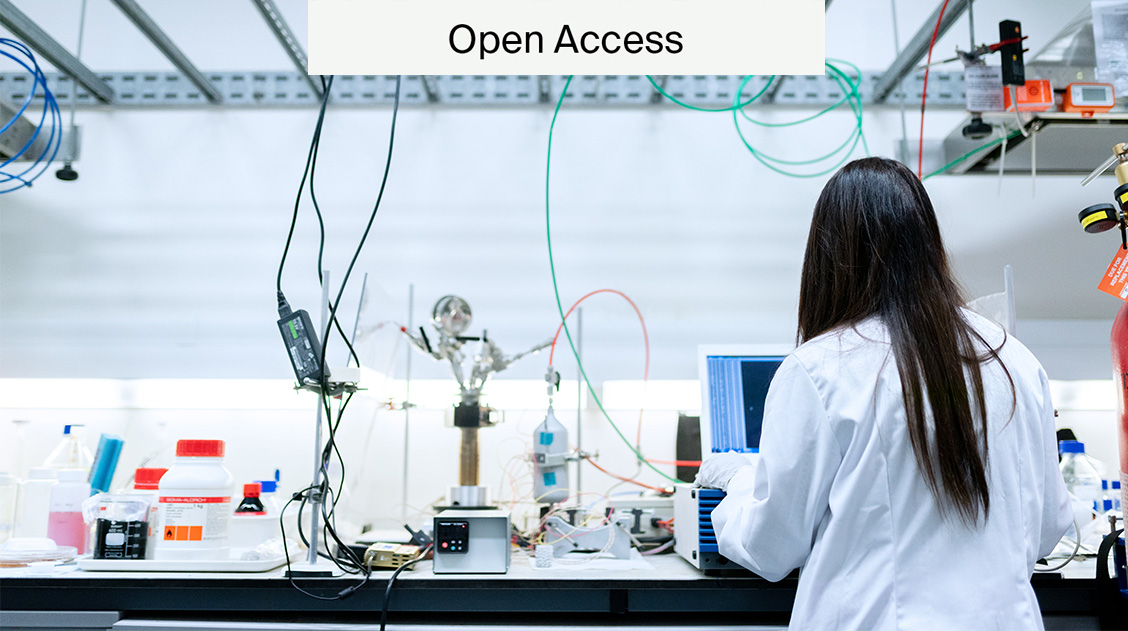
What is Open Science Infrastructure?
The UNESCO 2021 Recommendation on Open Science describes the four pillars of open science: open scientific knowledge, open science infrastructures, science communication, and open engagement of societal actors and open dialogue with other knowledge systems.
Here, we explore the second pillar, open science infrastructure (OSI). The article will demonstrate how open science is supported and enabled by infrastructure that is often built by the community.
What open science infrastructure is
UNESCO defines infrastructure as the following:
Open science infrastructures refer to shared research infrastructures (virtual or physical …) that are needed to support open science and serve the needs of different communities.
An infrastructure is a system or service that is necessary for something to run smoothly. For example, a society’s infrastructure includes power supplies and transport networks.
OSIs provide essential services that enable members of the scientific community to practice open science. Therefore, the systems or services are developed with specific open values in mind.
Furthermore, they are often developed by the community with a focus on long-term sustainability and access.
The foundations of open science
Open science infrastructure refers to a broad range of tools, technologies, and resources that can be virtual or physical.
Here are some examples:
- Shared scientific equipment or instruments.
- Data repositories.
- Open Access journals.
- Preprint repositories.
- Unique persistent identifiers.
- Scientometrics systems for assessment.
- Open source code and software.
These examples can be developed on a national level, like France’s HAL open archive, or a global level, like MDPI’s Preprints.org. The scale often reflects the aims of the developer and the demands of its users.
Infrastructure evolves with the demands of the industry and scientific community. Sometimes even new infrastructure must be developed. For example, when the United Kingdom introduced a policy for books to be made Open Access within 12 months, there were subsequent calls for infrastructure to be developed to host them.
Funding open infrastructures
Ensuring the long-term sustainability of open infrastructure requires adequate funding to ensure its maintenance and to create room for innovation.
Therefore, infrastructures are vulnerable to funding fluctuations and economic uncertainties. They require diverse expertise from within and outside of the scientific community and need to be user friendly.
Funding can come from various sources. These can include government support in the form of grants, subsidies, and dedicated research funding programs. Alternatively, they can be funded by philanthropic initiatives, public–private partnerships, institutional support, and donations.
Principles of open science infrastructures
As mentioned, open science infrastructures are developed with a specific set of values. They are mission-driven projects that enable the scientific community to advance openness.
Some of the driving principles behind OSIs include the following:
- Transcending boundaries of disciplines, geography, and institutions.
- Community driven.
- Non-discriminatory participation.
- Transparent governance.
- Open source.
Moreover, a survey conducted by the Ministère de l’Enseignement Supérieur et de la Recherche and commissioned by SPARC looked at the motivations behind developing OSIs. They found that most of the respondents are motivated by the ambition to further open science by making research and knowledge openly available.
Benefits of open infrastructures
But how do open science infrastructures actively advance and support open science?
- Helping to reduce the duplication of efforts by creating common spaces for scientists to work together.
- Accelerating the output of science.
- Increasing accessibility by removing financial barriers.
- Building a community with diverse backgrounds and knowledge.
- Enhancing reproducibility by enabling the validation and replication of findings.
- Building trust.
- Facilitating collaboration regardless of boundaries.
- Strengthening the scientific community through connections.
Examples of open infrastructures
The Directory of Open Access Journals (DOAJ) is a global index of OA journals. It is completely independent and is supported by over 100 voluntary editorial staff. The DOAJ carefully curates the journals that it indexes, therefore boosting the visibility and standing of journals with high quality standards.
Over the last 20 years, the DOAJ has become the go-to index for Open Access journals.
The DOI Foundation developed the digital object identifier (DOI). A DOI helps identify various objects, like articles or datasets, by using a unique string of numbers, letters, and symbols. This is a form of metadata, which are essentially data providing information about data.
Although DOIs are not designed specifically for open materials, they help navigate the ever-growing, high-volume digital information landscape by creating a standardised and easily identifiable tool that anyone can use or access.
These examples help improve the user experience of publishing open science, ensuring that information is accessible.
Research infrastructure
On the research side, the National Center for Biotechnology Information (NCBI) provides access to biomedical and genomic information.
The NCBI offers a range of open services:
- Automated systems for storing and analysing knowledge about molecular biology, biochemistry, and genetics.
- Coordinated efforts to gather biotechnology information both nationally and internationally.
- Collaboration with several National Institute of Health institutes, academia, industry, and other governmental agencies.
- Sponsored meetings, workshops, and lecture series.
- Development and promotion of standards for databases, data deposition and exchange, and biological nomenclature.
Overall, NCBI’s mission is to develop new information technologies to aid in the understanding of fundamental molecular and genetic processes that control health and disease. The Center creates tools that are used around the world, advancing science for the good of all through openness and collaboration.
Learn more about open science
To summarise, open science infrastructures provide services that enable the scientific community to practice open science. The 2021 UNESCO Open Science Recommendation describes how
Infrastructures are key to the sustainability of open science.
We are committed to ensuring you stay up to date with information about open science. Our article All You Need to Know About Open Access covers a range of topics.










